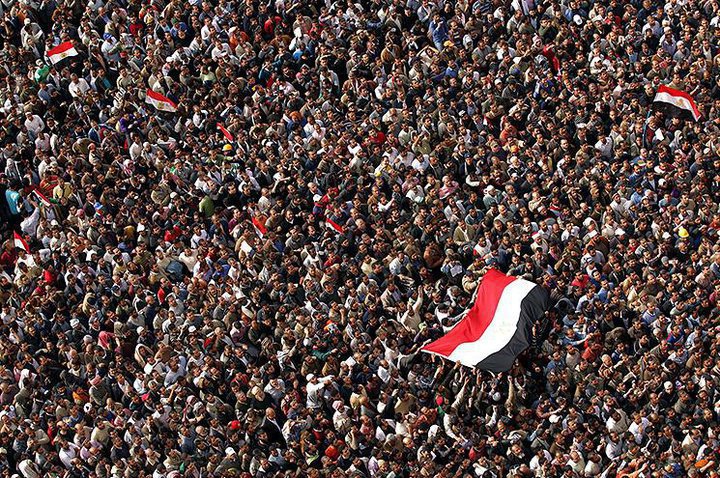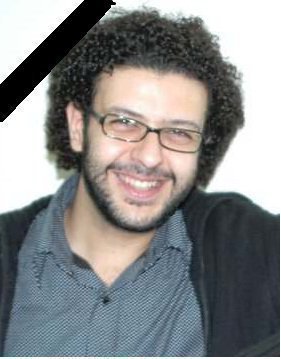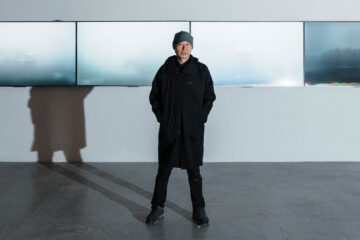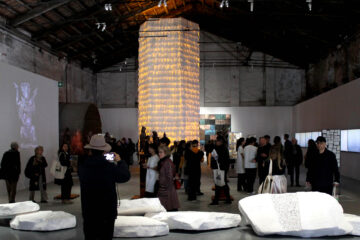AHMED BASIOUNY, MULTI-MEDIA ARTIST AND MARTYR OF THE 25 JANUARY REVOLUTION WILL REPRESENT EGYPT AT 54TH VENICE BIENNALE

’30 Days of Running in the Place’
54th International Venice Biennale pays tribute to Ahmed Basiouny, Egyptian artist and revolutionary martyr
Ahmed Basiouny, multi-media artist and martyr of the 25 January revolution, will represent Egypt in a solo exhibition at the 54th Venice Biennale

“Please, O Father, O Mother, O Youth, O Student, O Citizen, O Senier, and O more. You know this is our last chance for our dignity, the last chance to chance the regime that has lasted the past 30 years. Go down to the streets, and revolt, bring your food, your clothes, your zater, masks and tissues, and a vinegar bottle, and believe me, there is but one very small step left… If they want war, we want peace, and I will practive proper restraint until the end, re regain ny nation’s dignity” . Wrote Ahmed Basiouny on facebook the day before he died.
“Ti prego o Padre, o Madre, o gioventù, o studenti, o cittadino, o Senior e O altro ancora. Tu sai che questa è la nostra ultima occasione per la nostra dignità, l’ultima modifica per cambiare il regime che dura da 30 anni. Scendere in piazza, e di rivolta, portare il cibo, i vestiti, l’acqua, maschere e tessuti, e una bottiglia di aceto, e mi creda, non c’è che un passo molto piccolo a sinistra… Se vogliono la guerra, vogliamo la pace, e la pratica ritenuta corretta fino alla fine, per riconquistare la dignità della mia nazione.” Scrisse Ahmed Basiouny su facebook il giorno prima di morire.
Basiouny, who left a wife and two children, was shot by sniper fire and then crushed under a police car in Tahrir Square on the third day of Egypt’s 18-day revolution. He quickly became a potent symbol to protestors of the sacrifices they had to endure in the course of their struggle.
A symbol of the uprising
His life is being honoured during the 54th International Venice Biennale at the Egyptian Pavilion, commissioned by the Ministry of Culture’s Fine Arts sector, as a metaphor for change and possibility in a new, post-revolutionary Egypt – and as a symbol of the recent uprisings, throughout the Arab world, by millions of citizens demanding social justice and a dignified existence.
A pioneering new media artist in Egypt, Basiouny also represents the young ‘digital generation’ who manipulated the fluid, borderless mediums of digital media to sweep away an authoritarian regime and pave the way for a ‘new order’ to be created.
An artist and university professor, Basiouny was a leading figure in a new generation of contemporary Egyptian artists. Dedicated to the use of new media technology in his art and socio-cultural research, he is credited with founding the very first academic programme in sound experimentation in Egypt.
Next month the Egypt Pavilion will feature video footage of one of Basiouny’s most significant projects: ‘30 Days of Running in the Place’ (2010), alongside documentary footage filmed by the artist himself in Tahrir Square in the days before his death on 28thJanuary 2011.
In ‘30 Days of Running in the Place’ Basiouny designed and wore a custom-made plastic ‘space-like’ suit with sensors attached to his body and the soles of his feet, recording the body heat generated as he ran on a single spot for an hour each day. The heat generated was relayed, through the sensors, onto digital screens that displayed ever-changing patterns as the energy consumed was recorded in instantaneous, electronic readings.
The futility of action
The aim of Basiouny’s project was to observe how the act of running on the spot could be translated into a visual, coded diagram – a physical manifestation of the energy expended and lost – and one that is uniquely separate from the runner. The temporary, or transient, nature of this live-based performance is integral to the experience of this work that exists only in the immediate instant of running. It is an enactment of the futility of action, and of energy, under the old regime: the wasted efforts of an individual in a system where the individual has little value.
“30 Days of Running in the Place” was first performed in Cairo in January 2010, exactly one year before the revolution, in a collective show entitled ‘Why Not?’
The show sought to bridge the significant, and growing, divide between the former government and Egypt’s young contemporary artists. Basiouny’s use of digital media and the futuristic ‘look’ of the work itself is a clear rejection of the old system seen by the artist as marginalising new experimental art in favour of more traditional, formulaic expressions.
Footage of the revolution
In ‘30 Days of Running in the Place,’ Basiouny becomes both the central protagonist (literally the dynamo) of his work, and a detached observer of the digital recordings that unfold on the screens before him. The same is true of Basiouny’s video recordings of the events in Tahrir before his death. Though his camera was confiscated by the authorities, it was possible to recover footage of the revolution captured on the mobile phone found near his body.
Projected onto five large screens, stretching the full length of the 20 metre hall of the Egyptian Pavilion, will be random images of Tahrir Square, interspersed with videos of Basiouny’s work. The audience will be invited not just to witness the events in Tahrir, but to participate with the crowds and personally experience the public mood.
As the world watched Egypt’s revolution through hundreds of media channels, old and new, the lines between personal and public experience became blurred. The Pavilion will attempt to recreate this collective experience, in recognition of Basiouny’s own artistic interest in interactive art and the merging of experiences in the execution of ideas.
“Don’t be afraid or weak”
For Basiouny, the lines were also blurred between his roles as an activist in Tahrir, and as a detached ‘recorder’ of the historical events unfolding before him. His last entry on facebook captures this dichotomy: “It is necessary to be fully equipped while participating in the revolution…bring a camera with you and don’t be afraid or weak.”
Today, the reference to ’30 days’ has attained an added significance: though its original meaning was the thirty days of the 2010 exhibit, it has come to signify Basiouny’s own life cut short in the dying days of a three-decade long regime. Basiouny had only ever known this system and did not live to see it fall or participate in building Egypt’s future.
Social justice and basic human rights
According to Shady Elnoshokaty, Executive Curator of the exhibition, “Ahmed Basiouny was a man who believed in social justice and basic human rights and aspired to a better life for himself and his family. As such, ‘30 Days of Running in the Place’ is no longer the personal account of an artist struggling against deprivation and stagnation. It has transformed into a very public account, a collective narrative of a people that rejected passive acquiescence, rising up to demand change.”
The exhibition will be curated by Aida Eltorie, Director of the Finding Projects Association, and former editor of the Contemporary Practices journal and Cairo-based artist and instructor, Shady Elnoshokaty.






No Comment